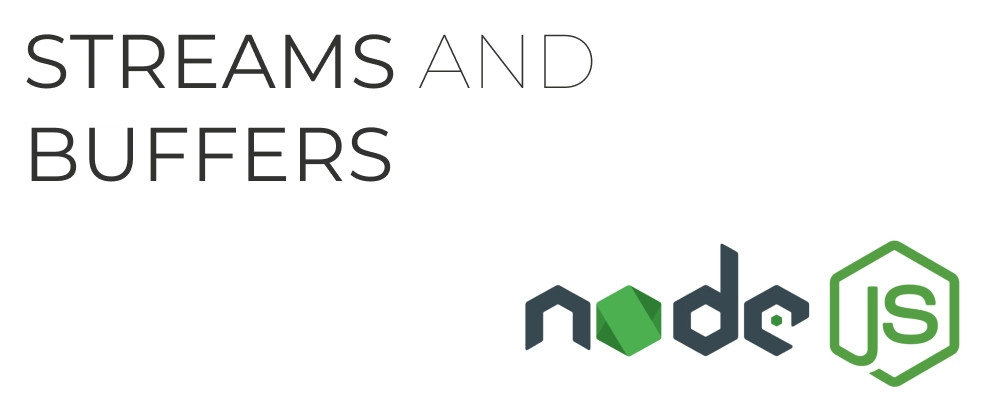Understanding Node.js Streams and Buffers
Streams and buffers are powerful concepts in Node.js, enabling efficient handling of data, especially large files or real-time information. Let's dive into understanding what streams and buffers are and how they work together in Node.js.
What are Buffers?
Buffers are temporary storage spaces in memory used to handle binary data. They enable Node.js applications to work with streams of binary data, such as files or network packets.
Creating a Buffer
Here's how to create a simple buffer:
const buf = Buffer.from('Hello Node.js');
console.log(buf); // Output: <Buffer 48 65 6c 6c 6f 20 4e 6f 64 65 2e 6a 73>
Converting Buffer to String
Here's how to correctly convert a buffer containing binary data back to a readable string:
const buf = Buffer.from([72, 101, 108, 108, 111, 32, 78, 111, 100, 101, 46, 106, 115]);
console.log(buf.toString()); // Output: Hello Node.js
What are Streams?
Streams are collections of data, just like arrays or strings. However, streams allow processing data piece by piece, making them highly efficient for handling large datasets or real-time data.
Types of Streams in Node.js
- Readable: Streams from which data can be read (e.g., reading from a file).
- Writable: Streams to which data can be written (e.g., writing to a file).
- Duplex: Streams that are both readable and writable.
- Transform: Duplex streams that can modify data as it passes through.
Using Streams
Reading Data (Readable Stream)
const fs = require('fs');
const readableStream = fs.createReadStream('file.txt', 'utf-8');
readableStream.on('data', chunk => {
console.log(chunk);
});
Writing Data (Writable Stream)
const fs = require('fs');
const writableStream = fs.createWriteStream('output.txt');
writableStream.write('Hello Streams!');
writableStream.end();
Piping Streams
Piping allows easy connection between readable and writable streams:
const fs = require('fs');
const readableStream = fs.createReadStream('input.txt');
const writableStream = fs.createWriteStream('output.txt');
readableStream.pipe(writableStream);
Why Use Streams and Buffers?
- Memory Efficiency: Streams handle data in chunks, reducing memory usage significantly.
- Speed: Buffers enable fast binary data processing.
- Scalability: Streams and buffers are ideal for applications that deal with large data or need real-time data handling.
Best Practices
- Always handle
errorevents when working with streams. - Use streams and buffers for processing large or continuous data to enhance performance.
- Ensure proper handling and closing of streams to avoid memory leaks.
Final Thoughts
Understanding streams and buffers can significantly boost the performance and scalability of your Node.js applications.
What practical uses of streams and buffers have you implemented in your Node.js projects? Share your experiences below! 🚀



Top comments (0)